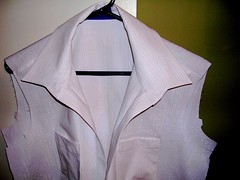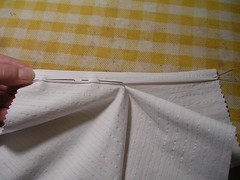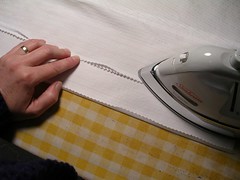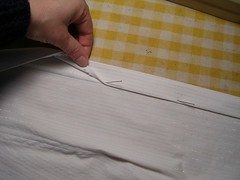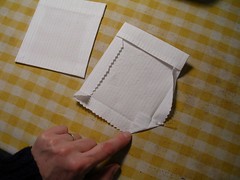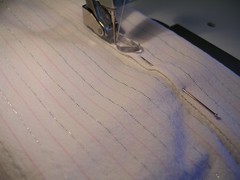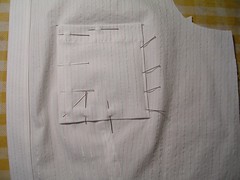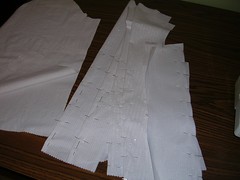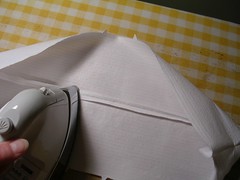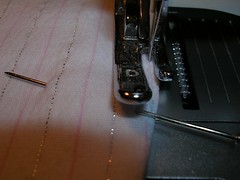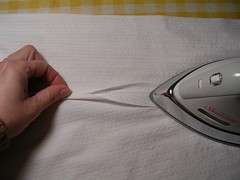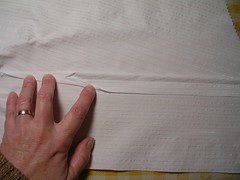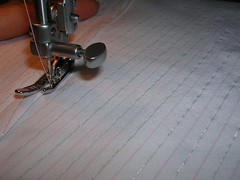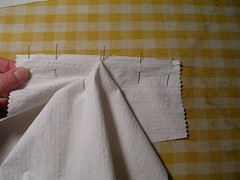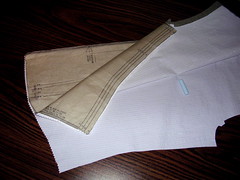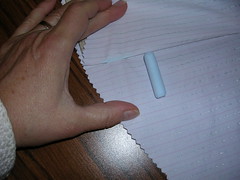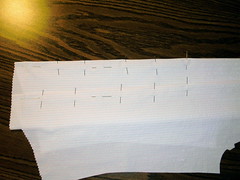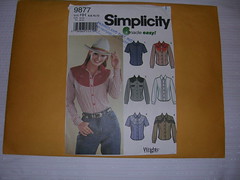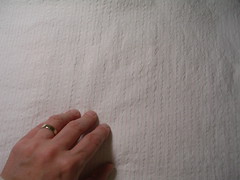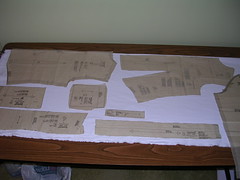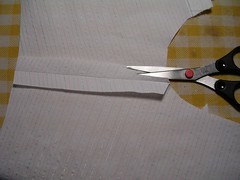
Pressing is everything. After you press the seam open and trim half of it, turn the thing over and press it form the right side. Then press the seam allowances to one side, with the untrimmed allowance on top. Turn the shirt back over to the wrong side and press again, so that the seam allowances are firmly to one side. Now tuck the untrimmed seam allowance over the trimmed one and press again.
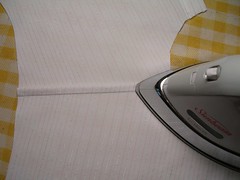
Now sew down the loose edge with a zipper foot.
Next is the collar. This is a one piece collar but the same technique can be used on the standard two piece collar with a band. I learned this from some pattern instructions once up on a time and now I use it everywhere. And I find it easier and neater than sewing the collar facing by hand. It works best when you interface BOTH sides of the collar so the collar and the collar facing are identical. It can get confusing when they aren’t identical which we can deal with some other time.
First you have to pin the collar to the neck edge of the shirt. the collar facing is the side that is folded up. This part is easy when you have a stretchy fabric like I am using. Lay the collar out on the ironing board with the facing side down. You put the collar down first because it is interfaced and therefore sturdy and not stretchy. Lay the shirt neck edge on top of the collar, with the WRONG side of the shirt touching the collar. Pin the centre notches together and stake them down to the ironing board cover with a pin.
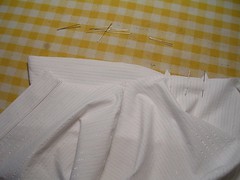
Now match up the edge of the band with the seam on the collar and pin them together.
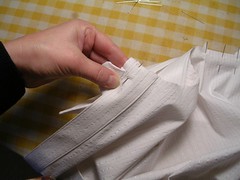
Stretch out the shirt between the band you just pinned and the centre notches and stick pins in carefully every half inch or so, making sure you don’t wrinkle the fabric up between the pins.
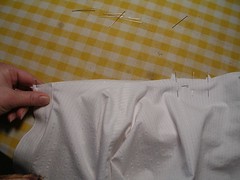
The more pins you use the better, so you don’t get any wrinkles. Do the same pinning with the other half of the collar. When you sew over all these pins, sew slowly so you don’t break a needle on them.
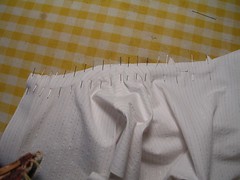
Now sew the collar to the shirt. When you are done, spread it out on the ironing board so that you can press the seam out flat. You should trim the seam allowances before you press. The seam allowances with be pressed toward the collar so they can be hidden when you sew the facing down.
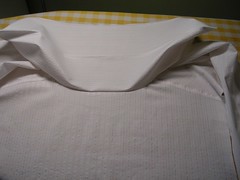
After pressing, turn the collar facing under and start to pin it over the sewing line where you stitched the collar to the shirt. This is similar to the placket and the band, where you cover a line of stitching with a fold of fabric. The ends are the most fussy points, as you have to fold in the raw edges and make a clean line.
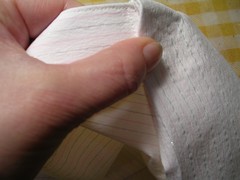
Once you have the collar facing folded over the stitching line - and this is on the RIGHT side of the shirt - make sure it is nice and flat and pin it in place. Now sew the facing to the shirt using a zipper foot.

This procedure gives you a nice flat finished edge to where the collar is attached to the shirt. When I used to sew the facing down by hand, it never seemed to lie as flat as this. Finally, the shirt is starting to take shape!
